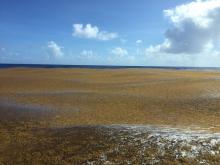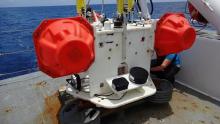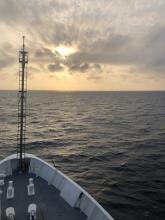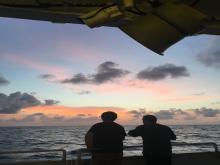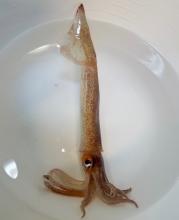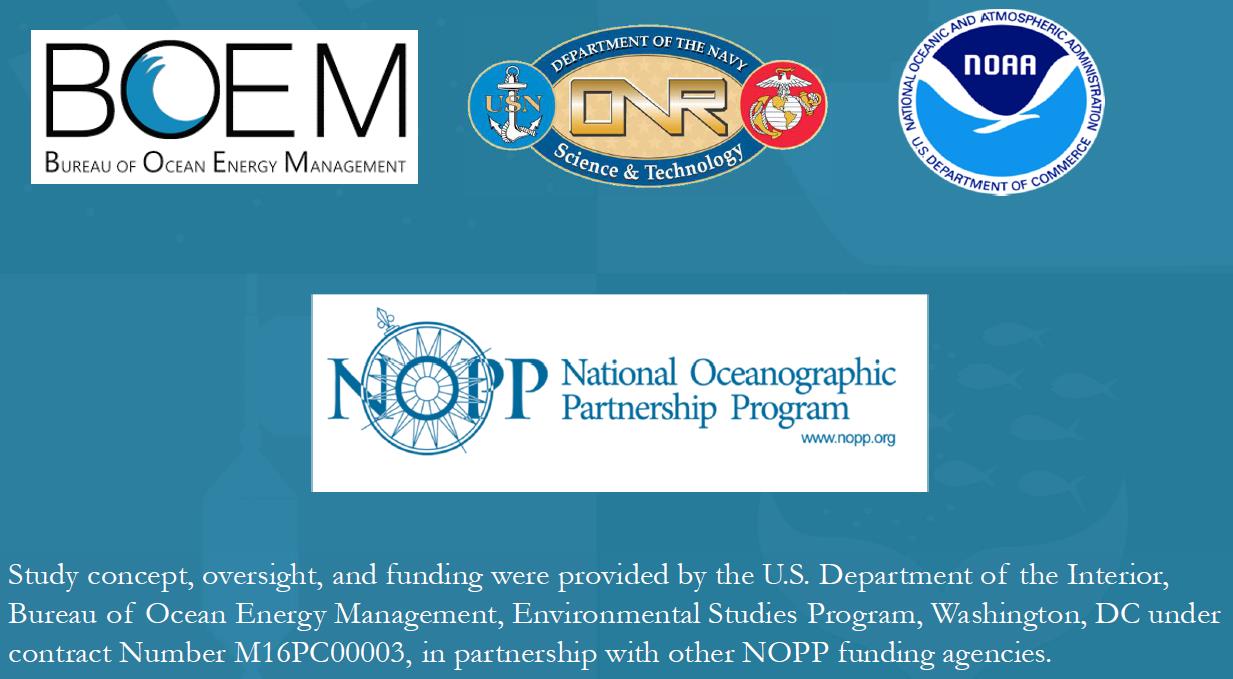25 June – Return to Shore. Joe Warren, Chief Scientist.
Well, the three weeks have flown by (or more accurately sailed by), and we have returned to land at the University of Rhode Island. We finally got some poor weather so the past two days have been a transit through some lumpy seas, but we were able to get all our science mission accomplished this trip PLUS lots of extra sampling as well since we had good weather for most of the trip.
Tags
Today is a trial of patience.
Today is a trial of patience. Looking out the portholes, we can see land, but we can’t yet step foot on it. We’ve completed our science, have begun the process of breaking down the shipboard lab, and are currently sitting offshore waiting for the tide to be right to motor up Narragansett Bay to the dock at the University of Rhode Island’s Graduate School of Oceanography.
Tags
Flotsam and Jetsam.
You’d be surprised at what you become fixated on when you’ve seen nothing but blue for two weeks. Our world on land is filled with visual stimulation. Our brains crave it. I know we like to roll our eyes at the youths and their addictions to screens and gadgets, but our cavemen ancestors were staring into fire and drawing on cave walls since before Snapchat. Out here, it’s all blue. Blue water and blue sky. Jen Miksis-Olds.
Tags
Under the Hood by Brandyn Lucca, Blog 23 June 2018
I had previously alluded to the “acoustic fingerprint” (or how objects reflect sound in the water) of marine critters we detect via our echosounders in my first blogpost, and I’d like to expand a little bit on that today. An animal’s acoustic fingerprint, or target strength (TS, dB re: 1 m2), is affected by a lot of things, such as an animal’s size (e.g., length, fatness) and shape (e.g., round, skinny), and how the animal is oriented relative to the surface (e.g., horizontal, head facing the surface).
Tags
A successful lander station turnover – By Carmen Lawrence.
We have reached the end of this stage of our fieldwork and have begun the transit home. This marks the end of a very successful lander retrieval, refurbishment, and redeployment. It was a busy turnaround – with lots of worn away anodes to replace and corroded hardware to swap out. By the last station, we were working like a well-greased machine, and it wouldn’t have been possible without the amazing crew of the R/V Endeavor.
Tags
Day 18 aboard the Research Vessel Endeavor.
Dolphins have surrounded the boat since the moment we arrived on the VAC site. Large schools of tuna have been seen feeding frantically at the surface. Sharks have been spotted patrolling the surfaces, swimming with an unparalleled swagger that screams that they are not the ones to be trifled with. The flying bridge, above the navigation bridge, is the ideal place to see them. My favorite part of life on the ocean is the magnificent views and beautiful sunsets seen from atop the flying bridge.
Tags
Diel vertical migration, the largest movement of animals on the planet!
This is Sebastian Velez, your resident ichthyologist, checking in and ready to fill you in on some of the more fishy discoveries we’ve made on ADEON 2 thus far. We’ve sampled from a number of different depths during the nighttime to catch some of the organisms that migrate to shallower depths on a daily basis. Many of these deeper animals can create their own light (bioluminescence) using light-producing organs called photophores for a number of different uses including defense, camouflage, and attracting prey.
Tags
Life aboard a ship.
Life aboard a ship - Madison Alstede, June 21, 2018
Living on a ship is so different than anything I have ever experienced, both in a good and a bad way. The motion of the boat rocking back and forth is hard to get used to at first, but after a couple days at sea, and some motion sickness medicine, the rocking becomes almost unnoticeable. Some nights the rocking of the boat can rock you to sleep. Alone time is sparse. There are only so many spots you can hide from other people on a 180 ft boat, and it is easy to get frustrated with people you are with every waking moment.
Tags
Fishing methods: Draggers versus Longliners.
Since rounding Cape Hatteras we have not only been encountering a lot more life on our echo sounders, but a lot of marine mammal and human life as well! This morning we were surrounded by not only pods of common dolphins, but also commercial fishing vessels. These vessels use large tube shaped nets called otter trawls to scoop up fish from the bottom.
Tags
Below the continental shelf where many interesting-looking deep sea fish live.
We sent our last deep tow down to more than 1300 meters, and collected some really cool critters! We moved a bit further offshore where the continental shelf drops off so that we can send a net even deeper down in the water column. As usual, we caught many interesting-looking deep sea fish.
Tags
Pagination
Copyright 2016 · All rights reserved



